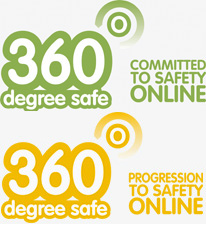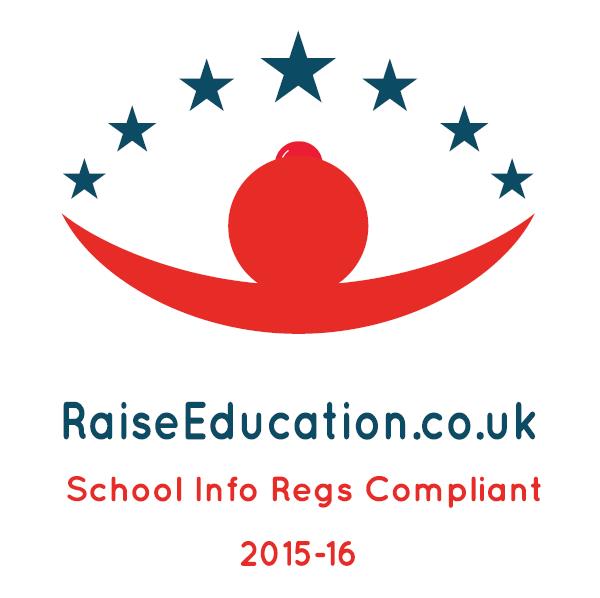Anti-Bullying
Introduction
St Joseph’s Catholic School's are committed to providing a safe, positive, valuing and inclusive environment for pupils, staff and parents/carers. The anti-bullying policy and practice plays an important role in this.
The following principles inform our anti-bullying approach:
- Bullying behaviour is in all circumstances unacceptable and will not be tolerated.
- All adults in the school community (staff, governors and parents/carers) are expected to present positive role models to children.
- Bullying is a shared problem and staff and parents will need to work together in partnership to resolve incidents.
- The safety and welfare of the children concerned will at all times be central to decisions about actions taken in response to bullying.
- Anti-bullying approaches will be consistent with the values of a Catholic Community and preparing children for life in an inclusive society. These include incorporating an acceptance of and valuing of difference, the need to cope with difficult individuals and the role of forgiveness.
- When incidents have been dealt with, all parties should be supported and enabled to move on positively. In keeping with our shared faith, it is our aim that in the resolution of incidents pupils should wherever possible be reconciled.
Definition
The following 3 dimensions collectively help us to define bullying behaviour*
- Bullying is intentionally hurtful
It is the deliberate, unjustifiable and unprovoked use of aggressive behaviour. It includes actions that cause physical, emotional or mental hurt to the victim and actions that violate another person’s freedom and rights.
- Bullying is a repeated experience
Being bullied is the experience of persistent or repeated anti-social behaviour. However, occasionally there can be single incidents which constitute bullying because of the fear and intimidation that projects beyond that initial incident.
- Bullying also involves an inequality of power.
The person/s being bullied find it difficult to reject or deal with the offending behaviour, or those involved in the bullying behaviour have power over the victim. Some power imbalances can be subtle or build up over time, but more common examples include that they are bigger/stronger/older, have more friends, are more established in the school or care less about the consequences of their actions. Bullying behaviour can involve individuals or groups.
*Please note: The school is required to provide statistics of bullying incidents on an annual basis using the DfES definition (2000) which states that bullying incidents are: “deliberately hurtful (including aggression), repeated over a period of time, where it is difficult for victims to defend themselves”.
Examples of bullying including:-
- Verbal bullying – such as mimicking, putting people down, saying horrid things about family, clothes or appearance, name-calling, anonymous notes and texts, blackmail, and deliberately embarrassing or humiliating others
- Physical bullying – such as hitting, pushing, hurting, hair pulling, pushing people around, kicking, deliberately disrupting work or play and extortion
- Indirect bullying – such as spreading rumours, isolation, excluding someone from discussions /activities and getting others to be hurtful or unkind
- Psychological bullying– such as intimidation, threats and looks to make another child feel uncomfortable or fearful
Where appropriate see also the Racial Equality Policy
All bullying behaviour is taken seriously, including subtle actions which can build up for individuals over time, eroding self-esteem and building unhappiness or a climate of fear.
The school avoids at all times labelling pupils as either victims or bullies. It is important that pupils who have been the targets of bullying behaviours are able to see that this experience will end and that it is not the result of something about themselves that has attracted or deserved such treatment by others. Similarly children who have engaged in bullying behaviour will be expected to resolve the matter and change their behaviour.
It should be remembered that there is no typical “bully”. Many children may use bullying behaviours from time to time.
Not all hurtful behaviour is bullying, but all hurtful behaviour is unacceptable in school. The following are examples of hurtful behaviour which may not be bullying.
- Children may fall out with their friends and engage in hurtful behaviour. Such experiences can be extremely distressing to the individuals involved.
- Children may retaliate against the hurtful behaviour of others.
Although not all hurtful behaviour is intentional, all hurtful behaviours are a matter of concern and will be dealt with by the school. Where pupils cause harm or distress without intent, the impact of their behaviour will be pointed out and any continuance will be regarded as intentional. Similarly, all unsafe behaviours and unsafe environment issues will be dealt with.
Strategies for preventing bullying
All incidents considered to be bullying (as defined above) are recorded and
monitored. The process for recording incidents is used to inform preventative strategies. Pupils will understand the school’s procedures for responding to bullying and know that they are safe.
At all times children’s concerns are our concerns. Pupils are encouraged to express their concerns about themselves and others and to seek help and support whenever they need it. However, we recognise that children can sometimes be reluctant to seek help, so pupils can report their concerns anonymously by using the comments box in each class. The school’s Behaviour Policy details the behaviour standards set within the school.
It is important for children to know that procedures are being followed. In order to encourage pupils to continue to express their concerns, where appropriate, information is shared across the school about bullying incidents having been dealt with and resolved.
Assemblies are from time to time used to reinforce positive anti-bullying messages and to raise issues concerning bullying within the context of a Christian message. Activities across the curriculum (largely in Personal, Health and Social Education, R.E. and English) develop pupils’ understanding of bullying and this includes key Christian messages, such as respect and forgiveness. Children are taught that each person is special and unique and that differences should be celebrated and should not be the focus of negative behaviour.
In order to build children’s resilience and reduce their vulnerability, pupils are coached and guided in developing coping strategies and in how to respond positively to hurtful behaviour. Pupils are encouraged to look out for each other and to show good witness behaviour by reporting their concerns for others.
Guidance is given to pupils who display behaviour which raises concern.
Procedures for dealing with incidents of bullying and unkind behaviour
(including staff responsibilities)
All incidents of bullying must be reported and all such reports will be taken seriously. The perspective of the person who feels bullied will contribute to understanding and establishing the seriousness of the incident. When bullying has occurred special actions will follow.
The school recognises that speed of response is important and wherever possible incidents will be resolved quickly. However, significant incidents will involve investigation and this can cause delay to the resolution. The school will need to take the time necessary to respond to and resolve incidents appropriately, while ensuring the safety of the child who feels bullied.
The role of all staff in responding to hurtful behaviour is made clear to them as part of their induction, including midday supervisors and teaching assistants. Teaching assistants will usually be involved as playground supervisors to give continuity of care.
Incidents of bullying (see definition above) observed or reported at play and lunch times will be referred.
Single incidents of bullying behaviour must be reported to and will be dealt with by the class teacher. (The head teacher will be kept informed of any incidents dealt with by the class teacher so that she holds the overview across the school.) Follow up and ongoing monitoring will be conducted by the class teacher whilst keeping the head teacher informed at all times, even if it is felt that the matter has been resolved. If the behaviour dealt with by class teachers continues it will be referred to the head teacher.
All repeated bullying behaviour should be reported directly to the head teacher. Significant incidents will be entered in the serious incidents book and all parents whose children are directly involved will be notified of significant incidents.
Responses to all bullying behaviour will be educative and seek to ensure that this behaviour will not be repeated. A child who has been involved in bullying behaviour will be expected to take responsibility for the impact of their behaviour on others, the reasons for their behaviour will be explored and they will be expected to improve and change. The aim will be to resolve incidents, rebuild relationships and restore a safe environment for all.
Incidents will be resolved in age-appropriate ways. Those who have been bullied have a right to know that action has been taken.
Persistent bullying – after support & counselling – could result in fixed term or permanent exclusion as a last resort. (See Behaviour Policy)
The role/involvement of pupils
Pupils will progressively develop their understanding of bullying and related behaviour issues through the curriculum. All pupils will be expected to develop appropriate witness behaviour and to show concern for others across the school community. Pupils will have opportunities to develop their resilience and problem solving strategies in the face of hurtful behaviour.
Concerns and worries related to incidents and bullying in general may be explored and shared with the classteacher, but pupils will have access to anonymous reporting opportunities through the use of a comments box. The seriousness of making false reports will be understood.
Pupils will be actively involved in anti-bullying developments through the school council, curriculum work and in special initiatives. From time to time pupils may be involved in group support for vulnerable individuals (those who have been bullied and those who have bullied).
What Can Children Do If They Are Being Bullied?
Each term or when incidents occur, class teachers will discuss bullying and reinforce the following strategies:
a) Remember that your silence is the bully’s greatest weapon.
b) Tell yourself that you do not deserve to be bullied and that it is wrong.
c) Be proud of who you are. It is good to be individual.
d) Try not to show that you are upset. It is hard, but a bully thrives on
someone’s fear.
e) Stay with a group of friends/people. There is safety in numbers.
f) Be assertive – shout “No!”. Walk confidently away. Go straight to a teacher or member of staff.
g) Fighting back may make things worse.
h) Generally it is best to tell an adult you trust straight away. You will get immediate support.
i) Teachers will take you seriously and will deal with the bullies in a way which will end the bullying and will not make things worse for you.
The role/involvement of parents
Parents have an important role in actively encouraging their child/ren to be a positive member of the school. Dealing with behaviour problems effectively requires the school and parents to work in partnership.
If parents have concerns about bullying or hurtful behaviour they should take up those concerns with the class teacher or the head teacher as soon as possible.
Parents should raise any concerns about bullying or other hurtful behaviour directly with the school and not with the parents of other parties, involved or otherwise. While we recognise that parents who are friends may wish to resolve matters informally they are advised that the school should always be made aware of tensions and difficulties between children so that they can be supported appropriately.
The best place to resolve conflicts between children is in school where all sides and aspects of incidents can be explored.
Parents are expected to exercise reasonable confidentiality around incidents in which they are involved. In particular, parents are requested not to spread stories about incidents. Partial information can be inaccurate and may affect the reputation of the school and of individual children and damage the atmosphere in the school community.
Parents will be informed of any significant incidents involving their children in order to enable them to support their child and the school in seeking resolution and restoring a safe environment for all children.
The role/involvement of governors
The governing body supports the head teacher in all strategies to eliminate bullying from our school, while still recognising that it is likely to occur in school from time to time. It is the responsibility of the governing body to monitor and review the anti bullying policy and its effectiveness. They require the head teacher to keep records of all bullying incidents and to report on the effectiveness of the school anti-bullying strategies.



















